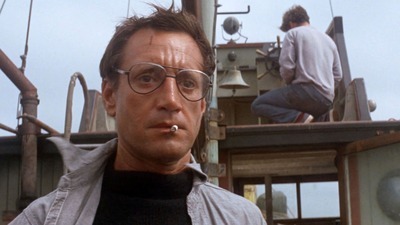[ad_1]
It launched Friedkin’s profession. And although Butler would return to shoot tv usually throughout his profession, when Friedkin went to Hollywood, Invoice went with him. Whereas Friedkin was off helming a spoof known as “Good Times” (1967) with Sonny & Cher, Invoice shot Phil Kaufman’s Frankenstein comedy “Fearless Frank” (1967), notable as Jon Voight’s debut but in addition for Butler’s curiosity within the pure world; his present for capturing the emotional intimacy of household relationships by easy, unforced framing; his fondness for the gradual push-in and excessive close-up to amplify pressure; of key-lighting and even a closing-iris in-camera impact to attract consideration to particulars in a scene; and for capturing from excessive excessive and low angles to offer visible curiosity and texture. When freshly-reanimated corpse Frank (Voight) foils a diabolical cat burglar in Fearless Frank, he punches the villain all the best way up a spiral staircase with one swing. Butler shoots the felon’s dazed mug from above so our sightline tracks all the best way down and round to Frank, nonetheless on the backside, trying up with one fist raised within the follow-through. Butler wasn’t ostentatious, he was succinct. Every part you wanted to know, you get in a single shot.
In easier phrases, Butler’s manner of seeing, born of modest, tightly-knit roots, a farmer’s love for the outside and an engineer’s and technological auto-didact’s ingenuity, helped to outline the look of the best period of movie within the historical past of the medium. Bill Butler grounded the incomprehensibility of the American ‘70s—the vitality and the cacophony of it; the sensation of change carried earlier than a violent, anarchic gale. Already 46 years previous throughout the Summer time of Love, he wasn’t one of many “Movie Brats,” that group of tousled trailblazers who crammed the gulf left behind by a decrepit studio system that discovered itself out of step with the tastes of the Flower Energy era.
He was there for Jack Nicholson’s directorial debut “Drive, He Said” (1971). He was there, too, for Robert Culp’s first and solely directorial effort, 1972’s great and sadly underseen LA noir “Hickey & Boggs,” the primary produced screenplay by a younger author named Walter Hill for which Butler re-used the sundown seaside shot on the finish of “Fearless Frank”. Then, a lot later, he shot actor Bill Paxton’s directorial debut “Frailty” (2001). In an interview with the Austin Chronicle in April of 2002, Paxton says “I wished my first film to have some nice craft in all the departments, and cinematically talking, I knew that Invoice Butler may try this.” If mentorship wasn’t a job Butler craved, it was one it appeared through which he was forged. Butler offered a search for “Frailty,” intimate and heat earlier than it turns into insinuating and sinister, keyed in on the daddy/son dynamics that drive the piece.
[ad_2]
Source link


